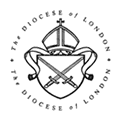History, mission and ministry
What’s good about / wrong with a parish?
No two parishes are the same: each has its own unique story, context and culture. Building on History has aimed to show that a congregation and leadership with an understanding of its past should be better equipped for facing the present and the future.
A congregation’s own ‘story’ about the past can form the basis for its self-perception. Furthermore, an understanding of the history of a congregation can contribute to the formation of an informed narrative, and challenge and deconstruct sometimes unhelpful and widely-accepted myths.
By looking at the past we can uncover past patterns of leadership and ministry which can inform our understanding of contemporary church life. Congregations often have specific characteristics, recurring themes in their experience and issues which have their roots in the past. Historical perspective can allow a congregation to be more self-aware and provide tools to deal with unresolved problems.
The History Audit
The Revd Neil Evans (Director of Ministry, Diocese of London) shares how his diocese has been encouraging parishes to explore their historical context.
In partnership with Building on History, in the Diocese of London we have developed a History Audit model, which helps individual congregations explore their past in a strategic and time-effective manner. The Audit is designed to assist congregations in the diocese in their wider process of contextualisation for contemporary mission and ministry. (And remember that a church doesn’t need to be ‘old’ to have a history! Even congregations established in the last twenty years have been shaped by their immediate past.) What follows are some examples of a History Audit in action.
- One congregation had a crisis of identity – it was unclear about its purpose and its mission. When it explored its foundation in the Victorian era it found that the church was built on the one piece of land that was left over by the property developers. A significant issue could be named: the church was built as an afterthought in the community, and in a less than ideal position. In the long-term this had prevented the development of a healthy identity and sense of purpose. The identification of this historical issue contributed to a self-awareness that allowed the congregation to face up to the challenge of considering more deliberately how it might define itself and seek out a new mission agenda.
- On arriving at a church in a comfortably-off part of suburbia, I discovered that relative to congregation size and electoral roll we were paying the lowest common fund in the deanery. I raised the issue at a PCC meeting and was told ‘the diocese charges us too much - they don’t understand the problems of maintaining a listed church building’. I was puzzled, especially as many of the churches in the area were also listed. When I spoke to a few long-serving members of the PCC and examined previous PCC minutes I discovered an attitude which went back over twenty years which said ‘poor us, no-one understands us; we’re poor and insignificant and we need supporting’. By naming this problem and finding evidence to the contrary the congregation was able to begin to resolve the issue.
- A congregation had spent some years in developing and articulating its core values and ways of working as well as developing priorities for mission and ministry in its current situation. One of the members of the congregation had a particular interest in reading old documents about the church and developing and writing up further the existing history of the life of the church. It was found that the key current areas of mission and ministry in the present were essentially unchanged from the vision 100 years ago. This led to a renewed sense that this was the mission of God in the congregation and community, and that the present church members were stewards of that vision, called to receive that vision and ministry and pass on to the next generation.
What to do next?
How could you use the History Audit process in your diocese?
It could be part of the diocese’s Mission Action Planning strategy.
- An Audit could inform a parish profile in preparation for the appointment of a new incumbent. This can help a congregation to evaluate its identity, needs and mission priorities. It could also help inform the selection process!
- A new incumbent or curate might undertake a History Audit to familiarise themselves with a parish.
- Ordinands could be encouraged to undertake an Audit of a parish as part of their training.
- An Audit could be included in IME 4-7 and CMD training.
For more information and for resources to promote the History Audit in your diocese, Building on History has produced a range of resources providing inspiration, ideas and models:
- The Building on History website (www.open.ac.uk/buildingonhistory ) includes bite-size
information on how to conduct a History Audit and is a gateway to a wide range of accessible historical resources for local congregations. - For a more in-depth guide to the audit process, see Neil Evans and John Maiden, What can churches learn from their past? The parish history audit (Grove Booklets, forthcoming).
Go to:





